Ever wonder what quail eat? A couple of years ago I overheard someone say that quail babies can’t eat seeds; they rely on low growing plants to provide insects.
Although I often wondered what I could do to provide quail with food to help them prosper, I never remembered to research when I sat down at the computer.
Fortunately a covey of quail adjacent to our property does fine without my help as they parade babies around every year between our fence and the hedge row.
Quite by accident. I love when this happens! Being a workshop and lecture junkie, when Christina Mild offered a Seed Collection field trip in Hugh Ramsey Nature Park, I signed right up.
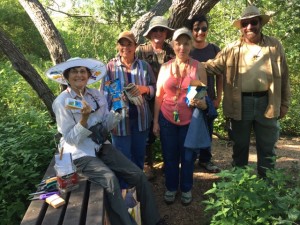
Two minutes into the lecture, she laid down six seed packets on a park bench and said, “This is a good quail food mix.” Just what I’d been wanting to know – wow, how did she know? I whipped out my phone and took a photo of the packets.
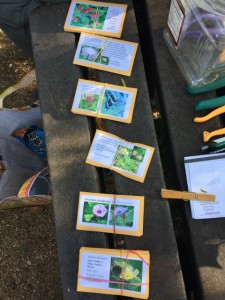
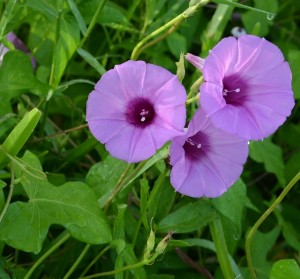
The seeds are from native plants easy to grow: scarlet sage, Salvia coccinea; basket flower, Plectocephalus americanus; clammyweed or cat’s whiskers, Polanisia dodecandra; common balloon vine, Cardiospermum Halicacabu; wild purple morning glory, Ipomoea cordatotriloba; and Jann’s Miller’s mauve Indian mallow, Abutilon hulseanum.
I asked, of course, how do they know quail eat these? The answer is that for many hunted species, wildlife management research includes study of stomach contents of harvested animals.
Christina, who holds a master’s degree in biological sciences, is an honorary member of our TMN chapter. She also is a charter member of the Native Plant Project. The NPP is committed to the preservation and propagation of plant life native to the Lower Rio Grande Valley.
Christina collects, dries, stores, and packages seeds, including planting instructions on the back of the packets.
A former teacher, she is generous with information and what she has learned through experience. For instance, when storing seeds, she slips a no-pest strip in the container along with the seeds. Bugs inevitably come along with the harvested seeds. A no-pest strip prevents being left with a pile of empty seed casings.
Four of the plant species, in early June, were ready for seed collection: Scarlet sage, basket flower, cat’s whiskers and common balloon vine.
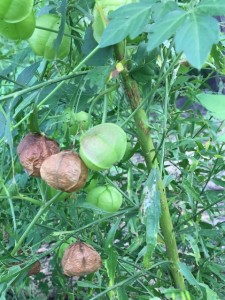
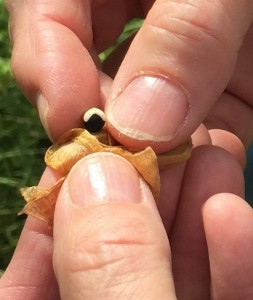
Armed with envelopes, buckets, jars of all kinds, even an empty Pringles container, we set out on our field trip along the banks of the Arroyo Colorado. Light gloves, pen and carry bags are helpful for this venture.
We were also able to collect abundant seed from velvety leaf gaura, Gaura parviflora and Lozano’s false Indian mallow, Allowissadula lozanii. These two species are important in the park because they compete fairly well in growth rate and stature with guinea grass.
The collected seed will be dried and packaged as well as broadcast in areas of the park.
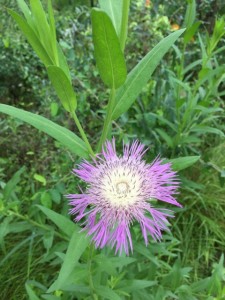
There is a lot of Internet information if one Googles: what do quail eat in Rio Grande Valley Texas? The quail here are the Northern Bobwhite.
Agrilife website, www.agrilife.org says that quail pick seeds from the bare ground. Plants should be mainly forbs (broad leaved flowering plants) because of the seeds they provide and the invertebrates they support.
Texas Parks and Wildlife website, www.tpwd.texas.gov says: “Northern Bobwhite use numerous kinds of seeds, grains, green vegetation (mostly forbs), berries, and insects for food; as many as 1,000 different plants may be included in their diet.” It’s all about the protein.
Our native plants also are an important source of moisture for quail both from morning dew on the leaves and from the leaves themselves. Insects are the primary food for hatching quail for the first 3-4 weeks and are an important nutrition and water source for adult quail.
Looks good to me Anita